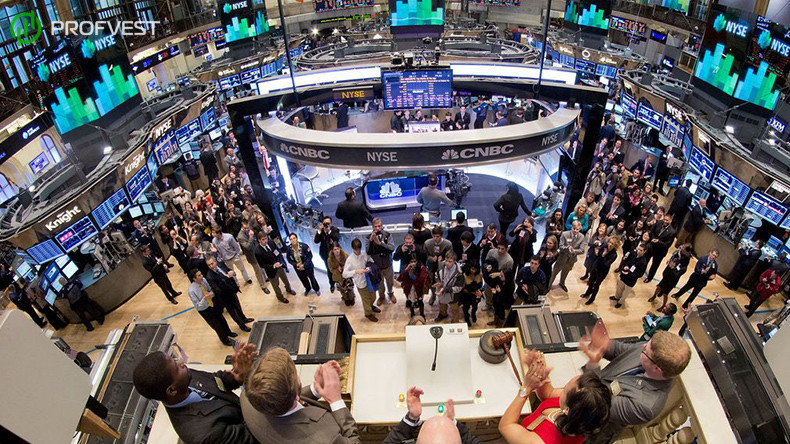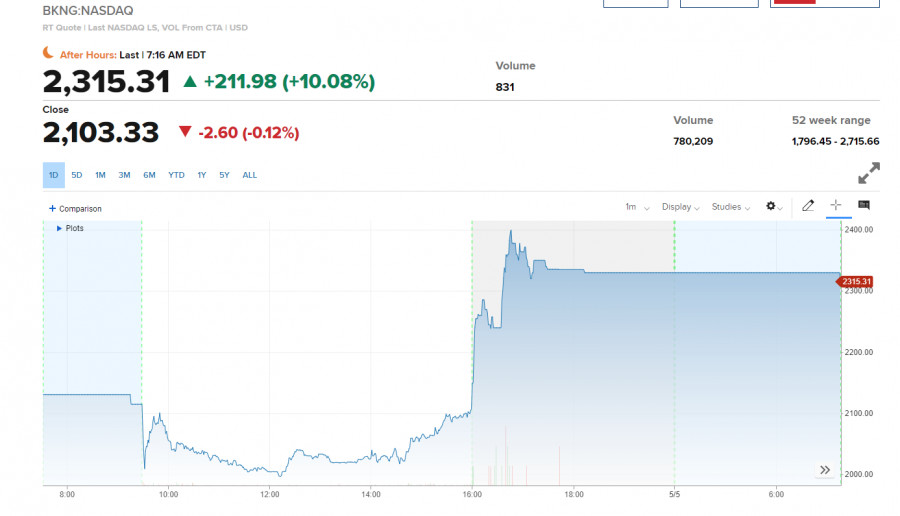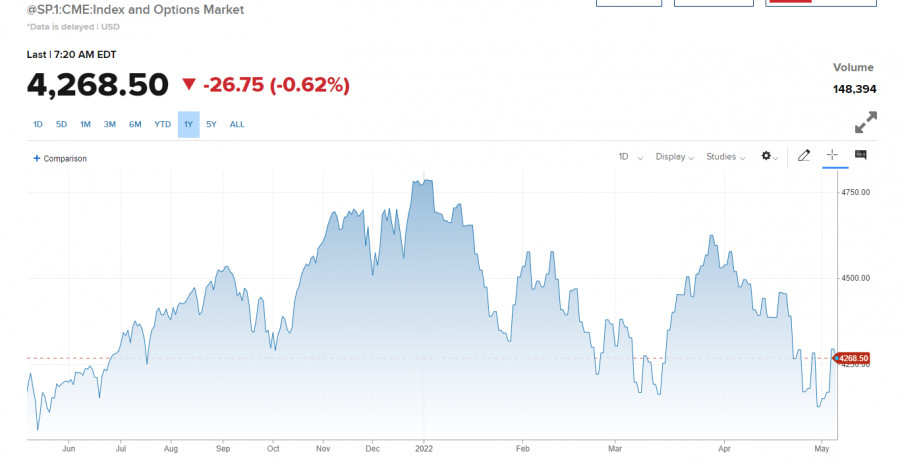
US stock index futures declined slightly on Thursday, playing back part of yesterday's sharp rise observed after the Federal Reserve raised rates. Dow Jones Industrial Average futures lost 186 points or 0.6%. Futures for the S&P 500 and Nasdaq 100 fell 0.8% and 0.9%, respectively. At the end of yesterday, the Dow Jones Industrial Average rose by 932 points or 2.81%, and the S&P 500 added 2.99% - the largest increase since 2020. The Nasdaq Composite jumped 3.19%.

As noted above, yesterday, the Fed raised interest rates by 50 basis points for the first time since 2000, and, more importantly, similar steps were planned for June and July. However, as I have repeatedly said, investors were more afraid not of the Central Bank's future steps to stabilize policy, but of unexpected decisions - we are talking about a larger rate hike, by 75 basis points. The lack of changes in the Fed's policy led to a sharp jump in stock indices, as traders and investors got a little respite before the June meeting of the Open Market Committee.
I have repeatedly drawn attention to the fact that the Fed is facing growing criticism due to the slow actions taken to combat inflation, which in March this year reached a 40-year high of 8.5%. Despite this, there was no more active fight against inflation following the results of the May meeting. Even the reduction of the Fed's balance sheet is expected to begin only from June 1 and from the amount of $ 47.5 billion per month. It is expected that in 3 months the volume of reduction will amount to $ 95 billion per month.
Against this background, some experts have suggested that the markets may get a breather and "exhale" after raising rates. Powell's comments reassured investors, as fears of a more aggressive Central Bank policy did not materialize.Despite all this, the Fed has made it clear that they would like financial conditions to tighten even more in the next few months. Therefore, the observed bullish rally will not last long, especially if the supply chains do not recover, and the problems with jobs begin to manifest themselves more and more. Against this background, the Fed's new hawkish statements will quickly lead to a new sell-off in the stock market.
Premarket
As for the reports, Etsy securities fell by more than 12%, and eBay lost 5.8% due to lower-than-expected revenue forecasts for the second quarter. Meanwhile, the shares of Booking Holdings rose by more than 8% in the premarket, and demand for them remains. The reason for all this is the abolition of coronavirus restrictions and the prospect of a sharp increase in demand for housing.
Shell, Shopify, and ConocoPhillips reports are expected today. After the markets close, data on Block, DoorDash, Shake Shack, and Zillow will be released. By the beginning of the opening of the American session, it will be possible to get acquainted with data on applications for unemployment benefits in the United States.
As for the technical picture of the S&P500

Yesterday, the bulls managed to gain a foothold above $ 4,265, which kept the demand for the trading instrument today. Now we need to think about how to protect this level, which can be tested during the regular session after the release of weak data on weekly applications for unemployment benefits in the United States. An update of $ 4,265 and an increase from this level will further strengthen the bullish sentiment observed after the Fed decided on interest rates. It is too early to talk about the resumption of the bull market, which only recently managed to find the bottom at around $ 4,050. Fixing above $ 4,265 opens up the possibility of a refund of $ 4,319 and an upgrade of $ 4,376. In the event of a return of pessimism and a more hawkish policy of the Central Bank, as well as in the case of weak statistics on the American economy, bulls will have to defend $ 4,265. The decline of the trading instrument under this level will quickly push it to the lows of $ 4,216 and $ 4,162. Having missed this range, it is best to postpone the purchase of a trading instrument to a minimum of $ 4,113.